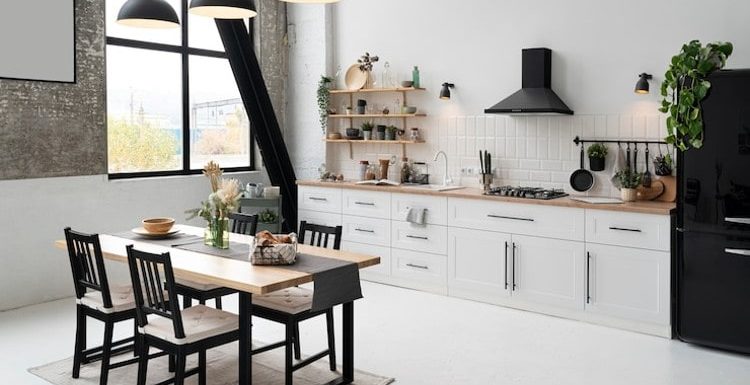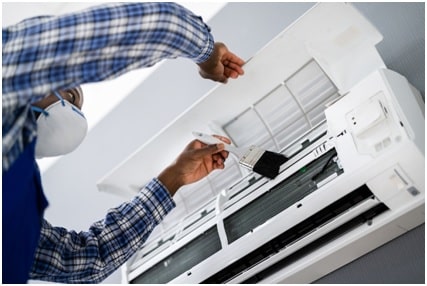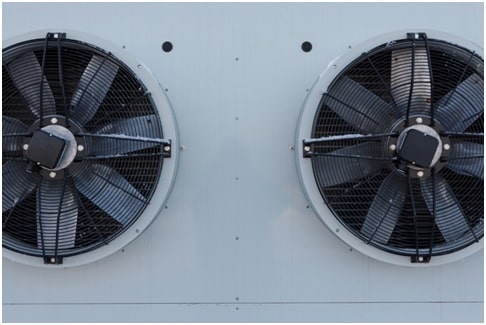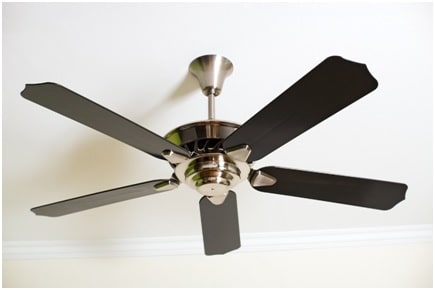
Most people thought very little about the air quality inside their homes before 2020. The pandemic brought forth new concern about how to keep our homes as clean and safe as possible – including the air. The reality is that air quality can have a much bigger impact on our health than we realize. The Environmental Protection Agency says people spend about 90 percent of their time indoors. It’s important that the air we breathe during that time is as fresh and pollutant-free as possible.
We often don’t realize how air quality is impacting us until it starts to become a health issue. Unhealthy air quality can cause headaches, irritation to the ears, nose, and throat, as well as dizziness. More serious effects may even include respiratory diseases and cancer. If you’re hoping to mitigate the impact poor air quality has on the health of your family, try these strategies:
- Remove Pollutants
The first step in improving the air quality in your home is to identify sources of pollution. Sometimes, this is easy – if you’ve been painting, for instance, you can move your paints and supplies out of the home.
Other times, though, pollutants aren’t as obvious. Scented candles, diffusers, and air fresheners are some of the most insidious contributors to indoor air quality. Many contain volatile organic compounds, or VOCs, like toluene, benzene, and formaldehyde. These can be hazardous to your health, causing irritation and headaches. Many cleaning products contain VOCs, too. Research your favorite products and see if they are negatively impacting your air quality.
Smoke is one of the most common indoor pollutants. Ideally, you should quit smoking, but if you can’t, avoid smoking inside. Even if it’s wet, cold, or uncomfortable outside, go outdoors for your smoke break. Just be sure windows and doors are closed while you smoke – you don’t want to inadvertently blow smoke back indoors.

- Change Your AC Filters
HVAC systems such as a PTAC Unit, work overtime to create the ideal temperature for your home all year long. While they’re cycling through that air, they’re filtering out many common air pollutants. When these filters fill up, though, they stop doing their job, leading to air conditioning repair work. This can cause problems for your AC system and lead to a decline in indoor air quality. By changing your filters regularly, you can help keep your system in the best condition possible while mitigating many of the most common kinds of indoor air pollution.
While you’re changing AC filters, don’t stop there – if you’re really hoping to improve the air quality in your home, make sure to check the filters in all your household appliances. Dryer and kitchen vents should be inspected and maintained regularly, as should your vacuum cleaner. By cleaning or replacing these household filters every few months, you set yourself up for the cleanest indoor air possible.
- Reduce Moisture
A musty smell in the house can be a serious red flag. It’s often a sign that your home has suffered some form of water damage. Water has a way of seeping in through the foundation, basement, and crawl spaces. By the time you smell it, the damage has likely already been done.
Since damp conditions can lead to respiratory symptoms like coughing, wheezing, and asthma attacks, it’s important to address this issue as soon as possible. You can reduce dampness by using a dehumidifier and opening the windows, but these are often just band-aid solutions.
If you’re serious about reducing dampness and controlling the musty scent, you’ve got to find and eliminate areas of moisture in your home. Water damage repair is an uphill battle, but it’s not an impossible task. Start by checking your fixtures to see if there are any obvious issues. Pipes, sinks, toilets, sprinklers, water heaters, and drains are all common sources of leaks. Until you resolve such issues, dampness is likely to permeate.

- Improve Ventilation
Fresh air does wonders to improve air quality. When possible, open windows to let air flow freely – so long as the outdoor air is clean and low in pollen, of course. You can also invest in an air purifier to help improve ventilation. HEPA filters remove 99 percent of harmful particles in the air. They’re great for reducing allergens like pet dander, VOCs, smoke, and excess carbon dioxide.
Indoor plants can also help improve air quality. Peace lilies and common ivy have been shown to reduce fine particles and VOCs around the home. Just be careful if you have pets at home – many houseplants are poisonous to curious cats and dogs who may want to take a bite.

- Always Use Kitchen and Bathroom Fans
Every home should have an exhaust fan in the kitchen. Using it while you’re cooking helps draw particles and gasses out of the air. Be sure to always use this fan, especially when cooking on a gas stove. Heaters and stoves that burn fuel release carbon monoxide, which can make you sick.
Your bathroom should have a fan, too. It pulls humid air in, as well as any other contaminants floating around. Always turn it on during steamy baths or showers, but also while you’re using cleaning products that contain bleach.
- Test for Radon, Carbon Monoxide
Many of the most dangerous indoor air pollutants are invisible to the eye and scent-free, too. Carbon monoxide, for instance, is often emitted from fireplaces, gas stoves, and other heating appliances. It can be deadly when breathed in for more than a few minutes. Most homes have carbon monoxide detectors installed, but if yours doesn’t, it’s worth investing in one.
Radon is another dangerous pollutant that may be lingering in your home. The invisible, odorless gas can cause cancer. While it is sometimes found in building materials, radon is most emitted naturally from the ground. If you’ve never had your home tested for radon, make it a priority to do so as soon as possible.
Wrapping Up
These indoor air quality tips are easy to implement and can have a significant impact on your health. By properly maintaining your home, avoiding pollutants, and bringing in as much fresh air as possible, you and your family can breathe a little easier.
Author Bio:
Lane Dixon is the vice president of operations for Aire Serv Heating and Air Conditioning has been in the HVAC and indoor air quality industry for 17 years. He has designed home comfort and indoor air quality systems for residential and light commercial applications, focusing mainly on filtration, UV technology, and duct cleaning and sanitation. Lane has also engaged with industry experts in indoor air quality to design training programs for both independent and franchise HVAC companies throughout North America.
